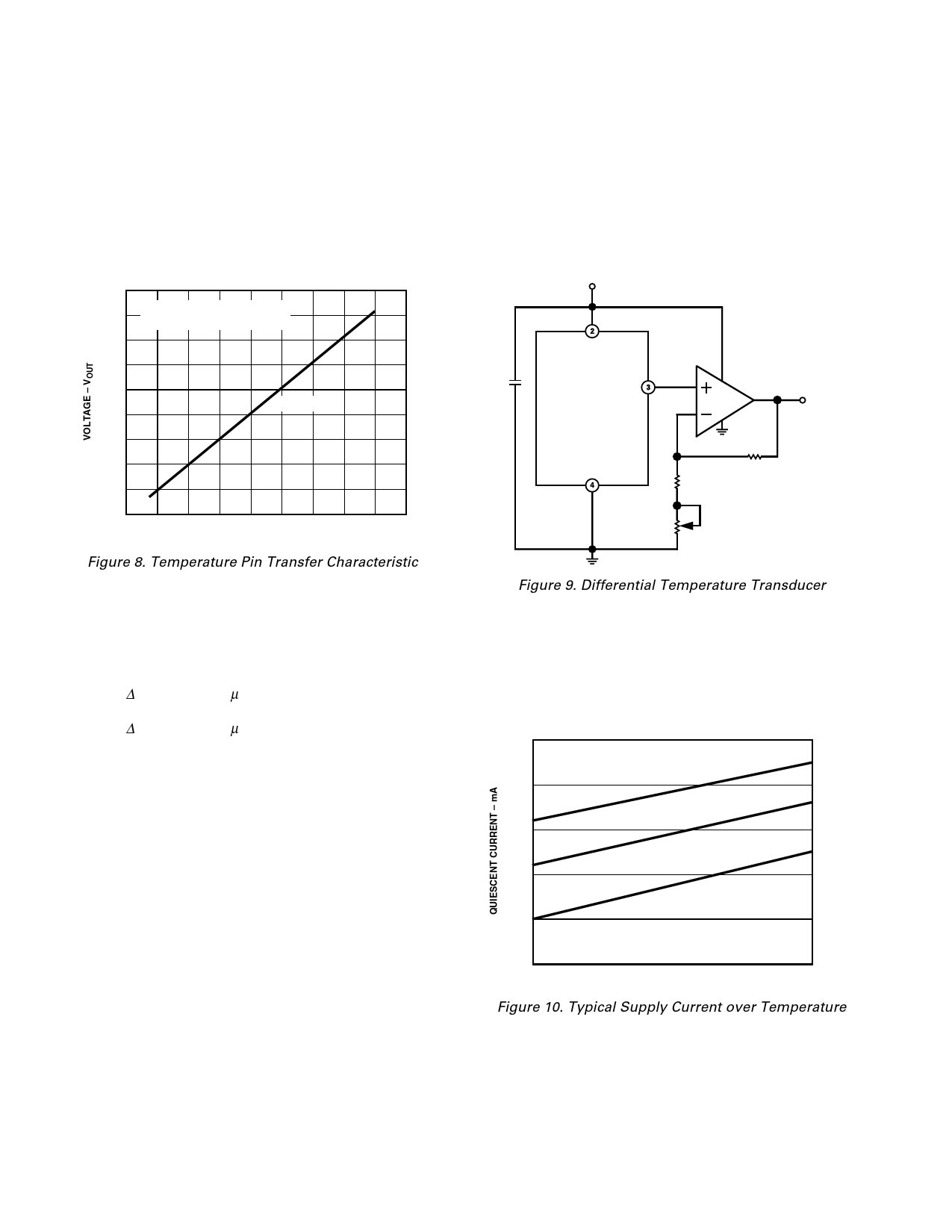AD780CR Просмотр технического описания (PDF) - Analog Devices
Номер в каталоге
Компоненты Описание
производитель
AD780CR Datasheet PDF : 10 Pages
| |||

AD780
TEMPERATURE OUTPUT PIN
The AD780 provides a “TEMP” output (Pin 3) that varies
linearly with temperature. This output can be used to monitor
changes in system ambient temperature and to initiate calibration
of the system if desired. The voltage VTEMP is 560 mV at 25°C,
and the temperature coefficient is approximately 2 mV/°C.
Figure 8 shows the typical VTEMP characteristic curve over tem-
perature taken at the output of the op amp with a noninverting
gain of five.
4.25
4.00
CIRCUIT CALIBRATED AT 25؇C
REFER TO FIGURE 9
3.75
3.50
3.25
10mV PER ؇C
3.00
2.75
2.50
2.25
2.00
–75 –50 –25
0 25 50 75
TEMPERATURE – ؇C
100 125 150
Figure 8. Temperature Pin Transfer Characteristic
Since the TEMP voltage is acquired from the bandgap core cir-
cuit, current pulled from this pin will have a significant effect on
VOUT. Care must be taken to buffer the TEMP output with a
suitable op amp, e.g., an OP07, AD820 or AD711 (all of which
would result in less than a 100 µV change in VOUT). The rela-
tionship between ITEMP and VOUT is as follows:
∆VOUT = 5.8 mV/µA × ITEMP (2.5 V range)
or
∆VOUT = 6.9 mV/µA × ITEMP (3.0 V range)
Notice how sensitive the current dependent factor on VOUT is. A
large amount of current, even in tens of microamp, drawn from
TEMP pin can cause VOUT and TEMP Output to fail.
The choice of C1 and C2 was dictated primarily by the need for a
relatively flat response that rolled off early in the high frequency
noise at the output. But there is considerable margin in the
choice of these capacitors. For example, the user can actually
put a huge C2 on the TEMP pin with none on the output pin.
However, one must either put very little or a lot of capacitance at
the TEMP pin. Intermediate values of capacitance can sometimes
cause oscillation. In any case, the user should follow the recom-
mendation in Figure 3.
TEMPERATURE TRANSDUCER CIRCUIT
The circuit shown in Figure 9 is a temperature transducer which
a amplifies the TEMP output voltage by a gain of a little over 5
to provide a wider full scale output range. The trimpot can be
used to adjust the output so it varies exactly by 10 mV/°C.
To minimize resistance changes with temperature, resistors with
low temperature coefficients, such as metal film resistors should
be used.
+5V
VIN
1F
TEMP
AD780
AD820
10mV/؇C
GND
RF
6.04k⍀ (1%)
RB 1.27k⍀ (1%)
RBP
200⍀
Figure 9. Differential Temperature Transducer
SUPPLY CURRENT OVER TEMPERATURE
The AD780’s quiescent current will vary slightly over tempera-
ture and input supply range. The test limit is 1 mA over the in-
dustrial and 1.3 mA over the military temperature range.
Typical performance with input voltage and temperature varia-
tion is shown in Figure 10 following.
0.85
–55؇C
0.80
25؇C
0.75
125؇C
0.70
0.65
0.60
4
36
INPUT VOLTAGE – Volts
Figure 10. Typical Supply Current over Temperature
–6–
REV. B